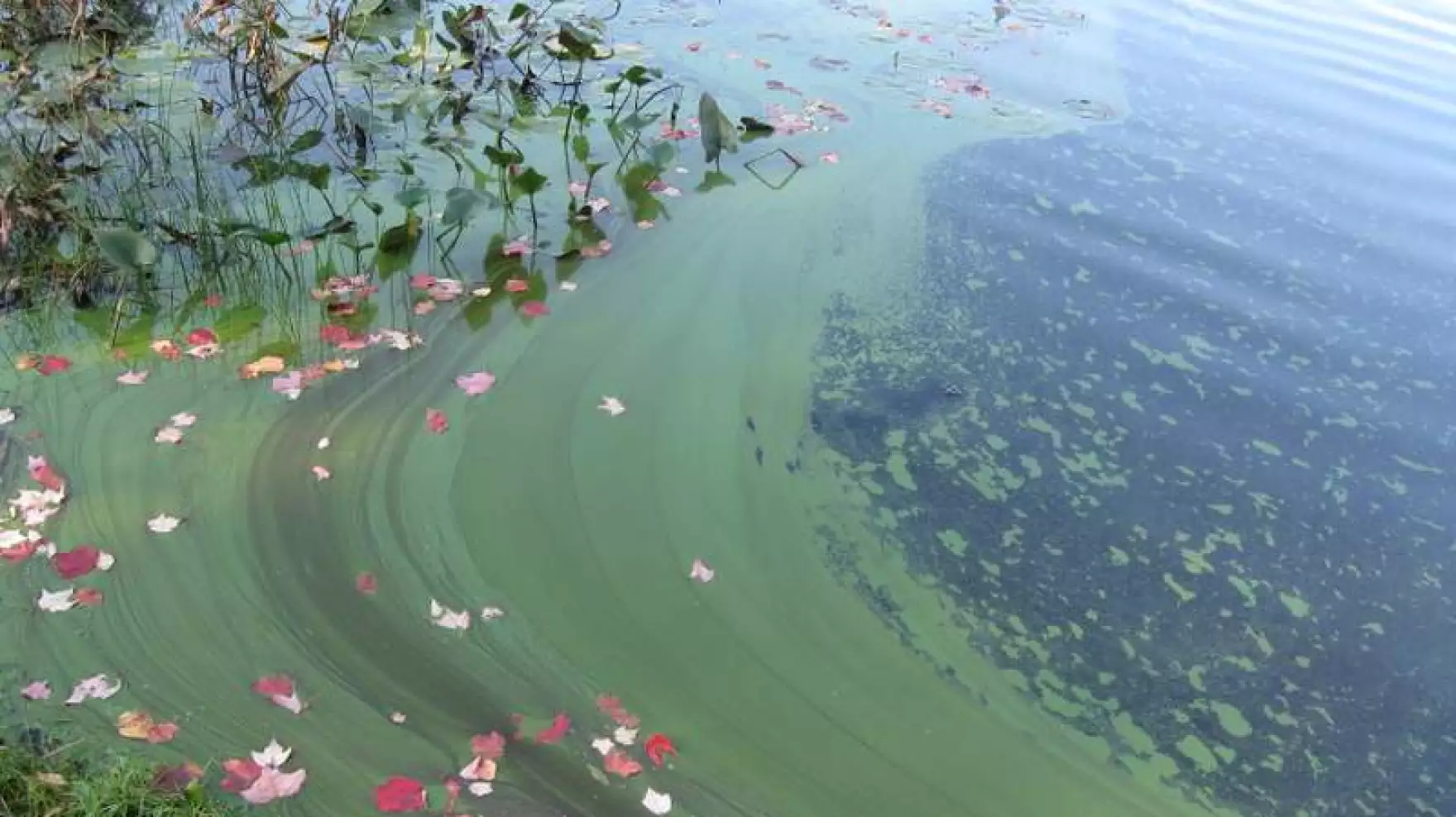 An algal bloom in a body of water (Picasa/Courtesy Of New Hampshire Department Of Environmental Services)
An algal bloom in a body of water (Picasa/Courtesy Of New Hampshire Department Of Environmental Services)
The New Hampshire Department of Environmental Services has created its first plan to address cyanobacteria blooms in the state’s lakes and ponds.
State officials say the blue-green algae has affected 113 surface waters in New Hampshire since 2004, mostly on lakes or ponds. This year set a record for blooms, with 69 across the state.
Cyanobacteria are some of the oldest living organisms in the world, and are native to New Hampshire. But blooms – when the bacteria grow rapidly, and can be seen on the surface of the water – seem to be getting more prevalent, state regulators say.
Blooms can pose a public health danger, producing toxins that can cause illnesses for swimmers or pets.
The state’s plan includes four main strategies for dealing with the increasing threat of cyanobacteria blooms: control the nutrients that cause the blooms, teach Granite Staters more about cyanobacteria and how to identify it, enhance the state’s monitoring of blooms, and establish plans for responding to blooms in drinking water supplies.
The two drivers of blooms are heat and the availability of nutrients like phosphorus in water. A 2020 study found that New Hampshire water bodies are warmer over the summer than they were 30 years ago. And as the areas around lakes and ponds become more developed, and climate change drives heavier storms which bring more runoff into water bodies, nutrients are becoming more available.
The plan says focusing on limiting nutrients going into water bodies will have a more immediate impact on reducing cyanobacteria blooms than efforts to mitigate climate change, so the authors focus on that approach.
“The things that we can do at the local level and even at the state level that really are going to affect change in our lakes in terms of reducing the prevalence of cyanobacterial blooms is controlling those nutrient inputs,” said Dave Neils, the chief aquatic biologist at the New Hampshire Department of Environmental Services.
Neils said managing septic systems, fertilizer application, and stormwater more effectively could help limit the nutrients that are carried into lakes and ponds by stormwater during heavy rains.
For residents who want to help limit the nutrients that get into water, Neils said people can start capturing rainwater that falls off of their roof in a rain barrel to use in the garden, or dig infiltration ditches on their property to capture stormwater.
Other solutions could take place at the local level, Neils said. Municipalities could extend the buffer zones around water bodies, require more frequent septic system inspections, or create utilities that manage stormwater.
State regulators maintain a map of cyanobacteria alerts, and Granite Staters can report sightings of blooms at this link.
These articles are being shared by partners in The Granite State News Collaborative. For more information visit collaborativenh.org.

 Current Issue - May 2024
Current Issue - May 2024